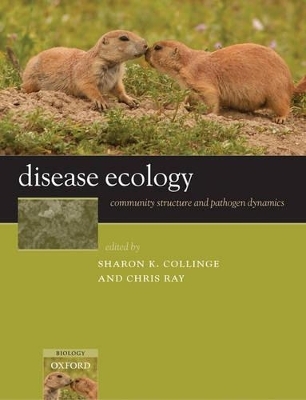
Disease Ecology
Oxford University Press (Verlag)
978-0-19-856708-0 (ISBN)
Many infectious diseases of recent concern, including malaria, cholera, plague, and Lyme disease, have emerged from complex ecological communities, involving multiple hosts and their associated parasites. Several of these diseases appear to be influenced by human impacts on the environment, such as intensive agriculture, clear-cut forestry, and habitat loss and fragmentation; such environmental impacts may affect many species that occur at trophic levels below or above the host community. These observations suggest that the prevalence of both human and wildlife diseases may be altered in unanticipated ways by changes in the structure and composition of ecological communities. Predicting the epidemiological ramifications of such alteration in community composition will require strengthening the current union between community ecology and epidemiology. Disease Ecology highlights exciting advances in theoretical and empirical research towards understanding the importance of community structure in the emergence of infectious diseases.
To date, research on host-parasite systems has tended to explore a limited set of community interactions, such as a community of host species infected by a single parasite species, or a community of parasites infecting a single host. Less effort has been devoted to addressing additional complications, such as multiple-host-multiple-parasite systems, sequential hosts acting on different trophic levels, alternate hosts with spatially varying interactions, effects arising from trophic levels other than those of hosts and parasites, or stochastic effects resulting from small population size in at least one alternate host species. The chapters in this book illustrate aspects of community ecology that influence pathogen transmission rates and disease dynamics in a wide variety of study systems. The innovative studies presented in Disease Ecology communicate a clear message: studies of epidemiology can be approached from the perspective of community ecology, and students of community ecology can contribute significantly to epidemiology.
Dr Sharon K. Collinge's research is based primarily in grassland ecosystems of the American west, integrating theories and methods of ecology and conservation to examine how changing landscapes affect interactions among native species. Her research centres on how habitat loss and fragmentation influence species interactions, particularly those involving disease dynamics in grassland mammals. Dr Collinge received her PhD from Harvard University in landscape ecology in 1995 and has been on the faculty of the University of Colorado-Boulder since 1998. Dr Chris Ray studies the demographic and genetic dynamics of spatially structured populations. Her research includes the development and application of predictive models, and the use of long-term field studies to test theory in population biology. Dr Ray received her PhD from the University of California-Davis in population biology in 1997, has worked on threatened and endangered species management projects for the US Fish and Wildlife Service, and has been a research associate at the University of Colorado-Boulder since 2001.
1. Community Epidemiology ; 2. Extending the principles of community ecology to address the epidemiology of host-pathogen systems ; 3. Community ecology meets epidemiology: the case of Lyme disease ; 4. Microbial community ecology of tick-borne human pathogens ; 5. Disease dynamics in plant communities ; 6. Host selection and its role in transmission of arboviral encephalitides ; 7. Freshwater community interactions and malaria ; 8. The community ecology of Vibrio cholerae ; 9. Food webs and parasites in a salt marsh ecosystem ; 10. Shifting roles of abiotic and biotic regulation of a multi-host parasite following disturbance ; 11. Urbanization and disease in amphibians ; 12. Spatial-temporal dynamics of rabies in ecological communities ; 13. The emergence of Nipah and Hendra virus: pathogen dynamics across a wildlife-livestock-human continuum ; 14. Potential effects of a keystone species on the dynamics of sylvatic plague
| Erscheint lt. Verlag | 26.1.2006 |
|---|---|
| Zusatzinfo | 1 colour plate, 64 figures, plus numerous boxes and tables |
| Verlagsort | Oxford |
| Sprache | englisch |
| Maße | 189 x 246 mm |
| Gewicht | 476 g |
| Themenwelt | Medizin / Pharmazie ► Medizinische Fachgebiete |
| Studium ► Querschnittsbereiche ► Epidemiologie / Med. Biometrie | |
| Naturwissenschaften ► Biologie ► Ökologie / Naturschutz | |
| Naturwissenschaften ► Biologie ► Zoologie | |
| ISBN-10 | 0-19-856708-1 / 0198567081 |
| ISBN-13 | 978-0-19-856708-0 / 9780198567080 |
| Zustand | Neuware |
| Haben Sie eine Frage zum Produkt? |
aus dem Bereich


